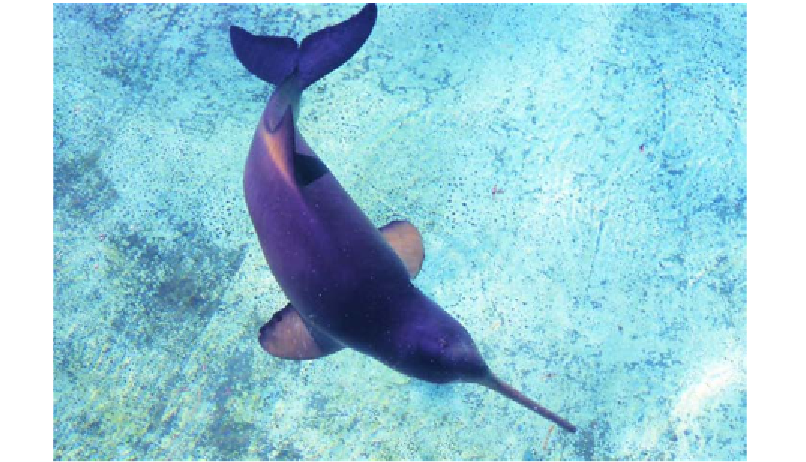Biology Reference
In-Depth Information
Figure 1. External characteristics of a franciscana dolphin: long and narrow rostrum, broad flippers and
typical ocher coloration.
O
RIGIN
,
E
VOLUTION AND
P
HYLOGENETIC
R
ELATIONSHIP
Shared skull characters among
Pontoporia
and the true river dolphins such as elongated
rostrum and mandibular symphysis have led many authors to consider them a monophyletic
lineage and classify them as belonging to the same the family (Platanistidae) or superfamily
(Platanistoidea) (Zhou, 1982; Cozzuol, 1985). These characters could, however, be ancestral
and converged to adaptation to living in turbid waters which would make them uninformative
for phylogenetic purposes (Cassens et al., 2000). Although this monophyly was often not
contested, morphological analyses and frequent disagreement among scientists led to several
re-classifications of the group's phylogenetic relationship. It was considered a group of four
genera in four monotypic family:
Pontoporia
(Pontoporiidae),
Inia
(Iniidae),
Lipotes
(Lipotidae) and
Platanista
(Platanistidae) (Zhou, 1982); then later
Pontoporia
,
Inia
and
Lipotes
were placed in the same clade, while other authors clumped
Pontoporia
and
Inia
in a
clade closely related to Delphinoidea and considered
Lipotes
as a sister group of this
Pontoporia+Inia+Delphinoidea clade (de Muizon, 1984). To date, paleontology cannot
elucidate this issue because, among other factors, fossil records of river dolphins are scanty
and geographically isolated (Cassens et al., 2000). Recent multiple evidence based on both
nuclear and mitochondrial DNA analyses was in accordance with recent morphological
findings to demonstrate that the group is not monophyletic and most probably polyphyletic,
which is also consistent with the highly disjunct geographic distribution of the group. These
data also suggest that the two South American species (
Pontoporia
and
Inia
) form the sister
group of the Delphinoidea (Cassens et al., 2000; Hamilton et al., 2001). In fact, fossils related
to Iniidae and Pontoporiidae were found in the same layers of the La Plata region (Cozzuol,
1985). Molecular data also suggested that river dolphins lineages diverged well before the


Search WWH ::

Custom Search